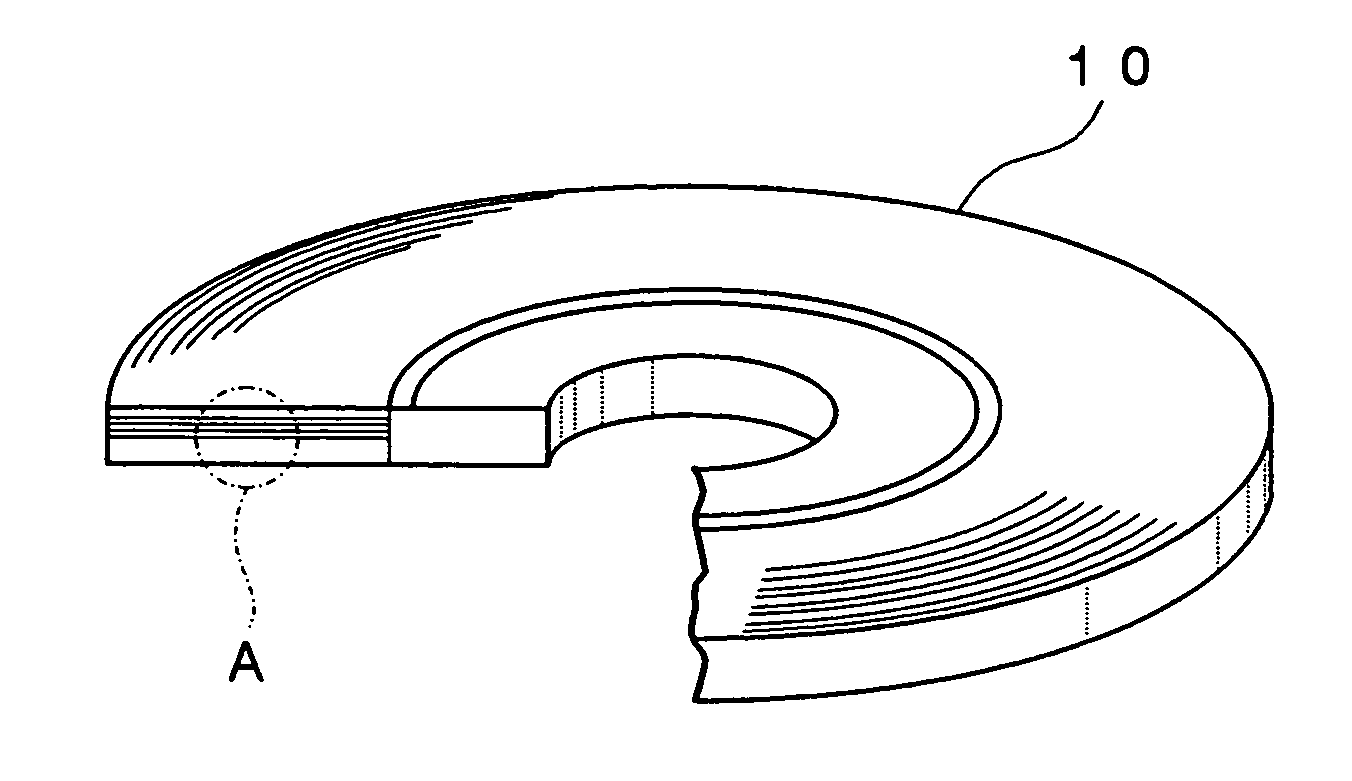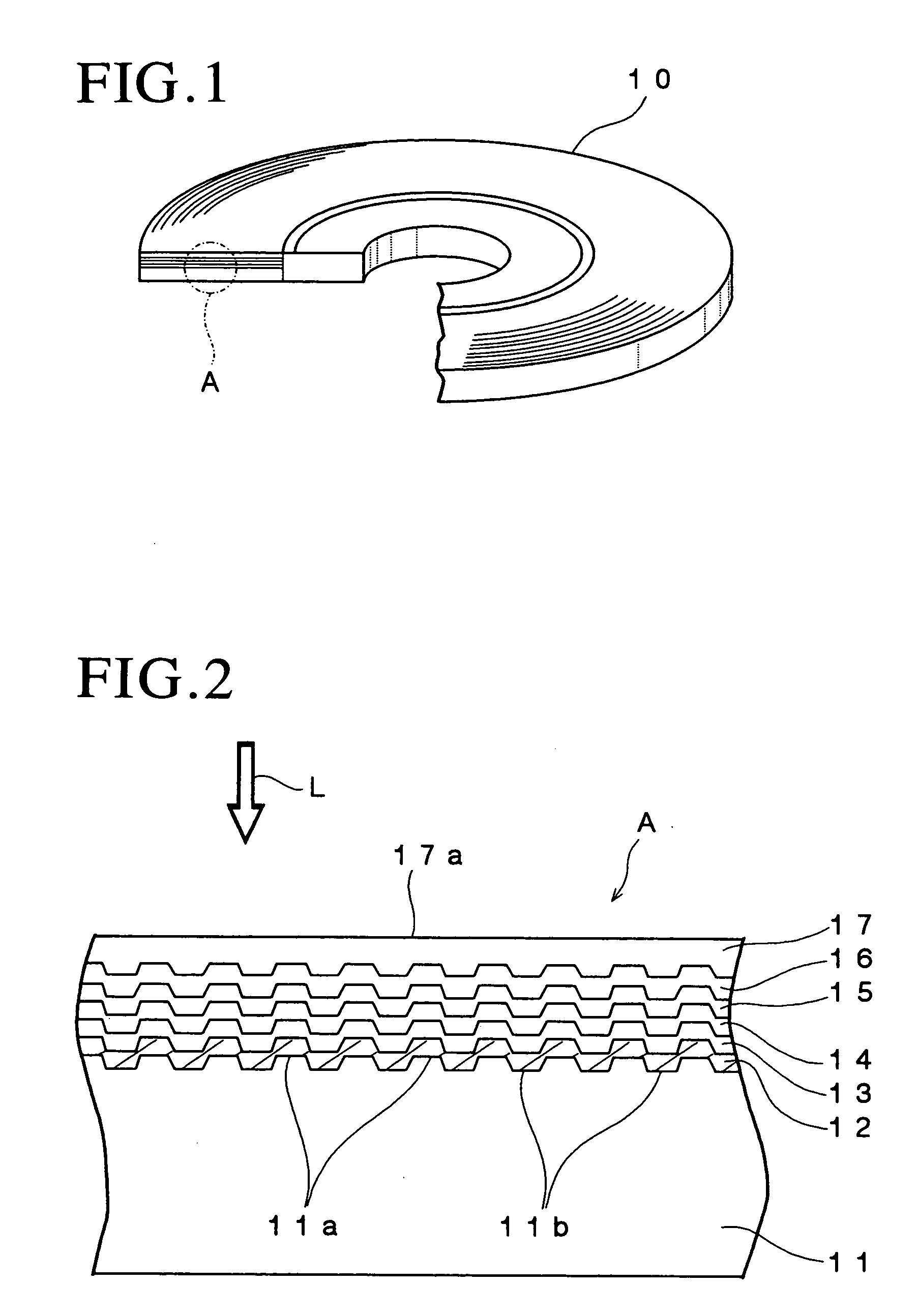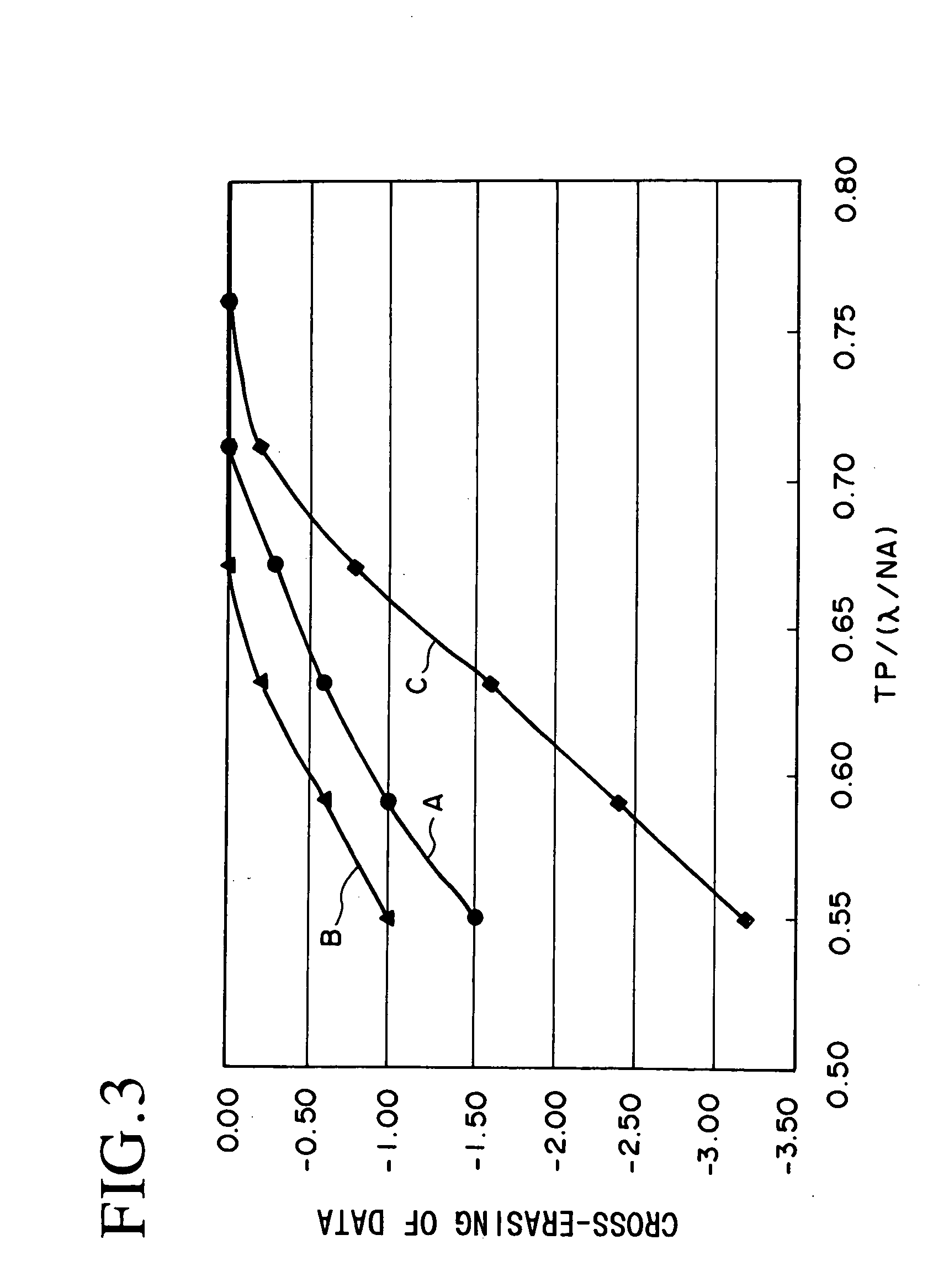Optical recording medium
a recording medium and optical recording technology, applied in the field can solve the problems of difficult layer formation, prone to cross-erasing of data, and the durability of optical recording mediums when data are repeated reproduced
- Summary
- Abstract
- Description
- Claims
- Application Information
AI Technical Summary
Problems solved by technology
Method used
Image
Examples
working example 1
[0092] An optical recording medium sample # 1 was fabricated in the following manner.
[0093] A substrate of polycarbonate having a thickness of 1.1 mm and a diameter of 120 mm and formed with grooves and lands on the surface thereof was first fabricated by an injection molding process so that the track pitch (groove pitch) was equal to 0.32 .mu.m. The depth of the groove was 25 nm.
[0094] Then, the substrate was set on a sputtering apparatus and a reflective layer consisting of an alloy of Ag, Pd and Cu and having a thickness of 100 nm, a second dielectric layer consisting of a mixture of ZnS and SiO.sub.2 and having a thickness of 12 nm, a recording layer consisting of Ge.sub.0.06Sb.sub.0.76Te.sub.0.18 and having a thickness of 12 nm, a first dielectric layer consisting of the mixture of ZnS and SiO.sub.2 and having a thickness of 30 nm and a heat radiation layer containing 90 atomic % of more of aluminum nitride and having a thickness of 100 nm were sequentially formed on the surfac...
working example 2
[0109] Each of the optical recording medium sample #1, the optical recording medium sample #2, the optical recording medium comparative sample #1 and the optical recording medium comparative sample #2 was set in the above mentioned optical recording medium evaluation apparatus and a laser beam having a wavelength .lambda. of 405 nm whose power was set to the recording power at which the clock jitter of a reproduced signal was lowest onto the recording layer of each sample to record an 8T signal in a predetermined track of the recording layer and the thus recorded 8T signal was then overwritten nine times.
[0110] Then, the 8T signal recorded in the predetermined track of the recording layer of each of the optical recording medium sample #1, the optical recording medium sample #2, the optical recording medium comparative sample #1 and the optical recording medium comparative sample #2 was reproduced and the carrier level C1 of the reproduced signal was measured.
[0111] Further, a laser ...
working example 3
[0118] Optical recording medium samples #1-1 to #1-6 were fabricated in the manner of fabricating the optical recording medium sample #1, optical recording medium samples #2-1 to #2-6 were fabricated in the manner of fabricating the optical recording sample #2 and optical recording medium comparative samples #1-1 to #1-6 were fabricated in the manner of fabricating the optical recording medium comparative sample #1, except that each support substrate was formed to have a different groove pitch (track pitch) in the range of 0.26 .mu.m to 0.36 .mu.m.
[0119] Then, each of the optical recording medium samples #1-1 to #1-6, the optical recording medium samples #2-1 to #2-6 and the optical recording medium comparative samples #1-1 to #1-6 was set in the above mentioned optical recording medium evaluation apparatus and similarly to Working Example 2, cross-erasing CE of data was measured in each sample, thereby measuring the relationship between cross-erasing CE of data and TP / (.lambda. / NA)...
PUM
| Property | Measurement | Unit |
|---|---|---|
| thickness | aaaaa | aaaaa |
| thickness | aaaaa | aaaaa |
| outer diameter | aaaaa | aaaaa |
Abstract
Description
Claims
Application Information
 Login to View More
Login to View More - R&D
- Intellectual Property
- Life Sciences
- Materials
- Tech Scout
- Unparalleled Data Quality
- Higher Quality Content
- 60% Fewer Hallucinations
Browse by: Latest US Patents, China's latest patents, Technical Efficacy Thesaurus, Application Domain, Technology Topic, Popular Technical Reports.
© 2025 PatSnap. All rights reserved.Legal|Privacy policy|Modern Slavery Act Transparency Statement|Sitemap|About US| Contact US: help@patsnap.com



